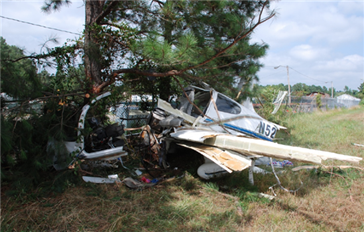If you own or regularly fly a Cirrus or any aircraft for that matter, Rick Beach has written a lengthy and must read post for the Cirrus Owners & Pilots Association (COPA) about a fatal Cirrus crash in North Carolina. Rick began his post by noting excerpts from the NTSB report about the crash:
Witnesses observed the airplane overfly the runway and enter a left traffic pattern. The airplane appeared to be faster than they were accustomed to seeing small airplanes operating. The airplane touched down hard on the runway surface and bounced several times before departing off the left side into the grass. The engine was described by the witnesses as operating at full power and the airplane appeared to by flying about 60 to 70 mph. The nose of the airplane was observed in a 45-degree nose up attitude and then leveled out back onto the ground.
The aircraft’s left wing then hit a tree while the rest of the aircraft hit the airport’s perimeter fence. The NTSB ruled that the cause of the accident was the pilot’s improper recovery from a bounced landing and then an improper go-around procedure.
However, Rick then pointed out that the pilot had never flown to the Chapel Airport before and from satellite pictures of the airport, he noticed that trees seem much closer to the runway and this could impact exposure to winds and crosswinds in particular. Hence, he discussed at length what procedures a pilot should take when landing on a runway at an unfamiliar airport.
In addition, Rick wrote about what he termed as “lazy right foot syndrome” as he pointed out that Cirrus runway excursion incidents usually seem to be on the left side of the runway. Hence, he is under the suspicion that Cirrus pilots are failing to apply sufficient right rudder in order to compensate for the left-turning tendency when full power is applied.
Finally, Rick also covered the topics of landing speeds, landing too fast resulting in runway bounces, the go around decision/procedure and flying with other pilots (In the incident, there was another pilot in the aircraft who had had zero time in a Cirrus but 12,500 hours in other types of aircraft).
Rick’s entire lengthy article is well worth reading plus you can read more about the crash on the following COPA forum thread: Cirrus fatal #65 in SR20 N527MJ near Chapel Hill (was Sr 20 Down Chapel Hill).

Leave a Reply